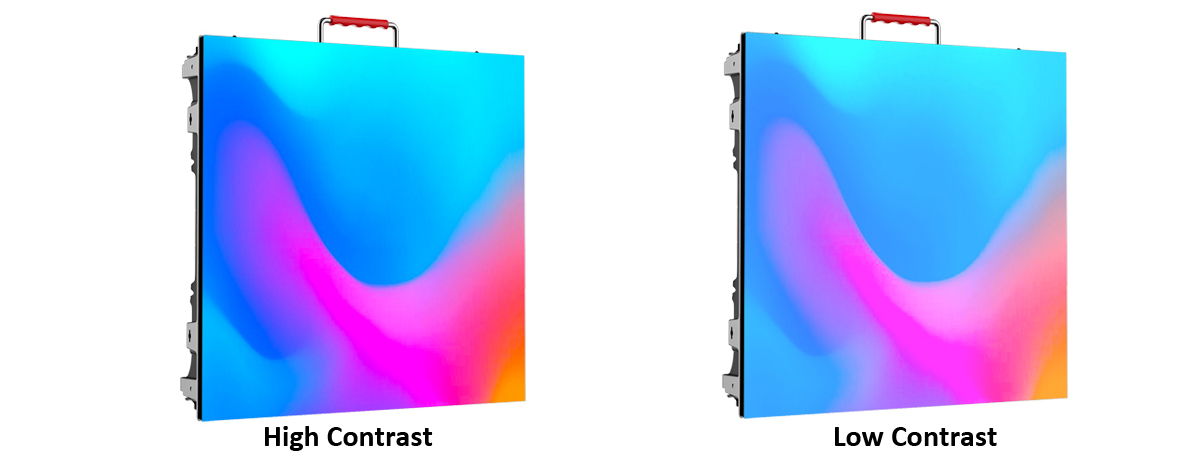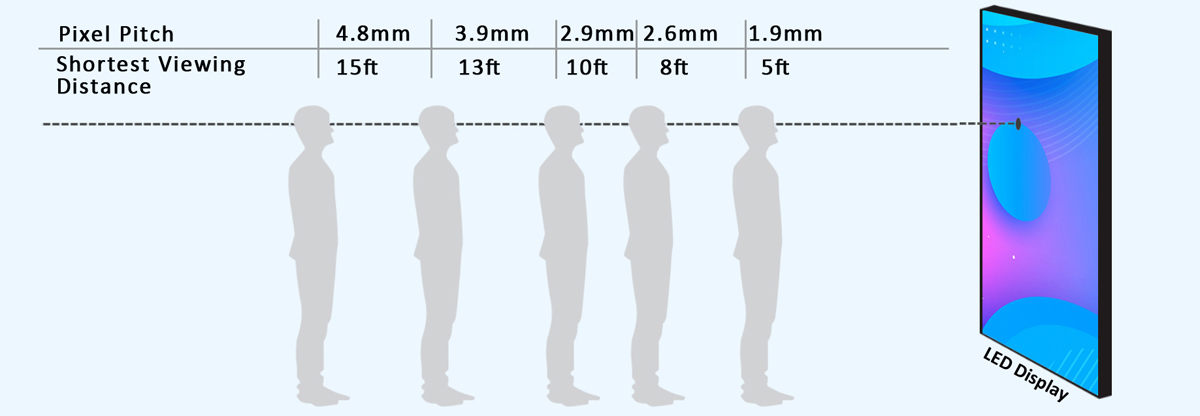There are many technical parameters of LED display screen, and understanding the meaning can help you better understand the product.
Pixel: The smallest light-emitting unit of an LED display, which has the same meaning as the pixel in ordinary computer monitors.

Pixel pitch: The center distance between two adjacent pixels. The smaller the distance, the shorter the viewing distance. Pixel pitch = size / resolution.
Pixel density: The number of pixels per square meter of LED display.
Module size: The length of the module length by the width, in millimeters. Such as 320x160mm, 250x250mm.
Module density: How many pixels a LED module has, multiply the number of rows of pixels of the module by the number of columns, such as: 64x32.
White balance: The balance of white, that is, the balance of the brightness ratio of the three RGB colors. The adjustment of the brightness ratio of the three RGB colors and the white coordinates is called white balance adjustment.
Contrast: Under a certain ambient illumination, the ratio of the maximum brightness of the LED display to the background brightness. High contrast represents relatively high brightness and vividness of rendered colors.

Color temperature: When the color emitted by the light source is the same as the color radiated by the black body at a certain temperature, the temperature of the black body is called the color temperature of the light source, unit: K (Kelvin). The color temperature of the LED display screen is adjustable: generally 3000K ~ 9500K, and factory standard is 6500K.
Chromatic aberration: LED display is composed of three colors of red, green and blue to produce various colors, but these three colors are made of different materials, the viewing angle is different, and the spectral distribution of different LEDs changes, which can be observed. The difference is called chromatic aberration. When the LED is viewed from a certain angle, its color changes.
Viewing angle: The viewing angle is when the brightness in the viewing direction drops to 1/2 of the brightness of the normal to the LED display. The angle formed between the two viewing directions of the same plane and the normal direction. Divided into horizontal and vertical viewing angles. The viewing angle is the direction in which the image content on the display is just visible, and the angle formed by the normal to the display. Viewing angle: The screen angle of the LED display when there is no obvious color difference.
Best viewing distance: It is the vertical distance relative to LED display wall that you can see all the content on LED video wall clearly, without color change, and the image content is clear.

Out-of-control point: The pixel point whose luminous state does not meet the control requirements. The out-of-control point is divided into three types: blind pixel, constant bright pixel, and flash pixel. Blind pixel, are not bright when it needs to be bright. Constant bright spots, as long as LED video wall is not bright, it is always on. Flash pixel is always flickering.
Frame change rate: The number of times the information displayed on the LED display is updated per second, unit: fps.
Refresh rate: The number of times the information displayed on the LED display is completely displayed per second. The higher the refresh rate, the higher the image clarity and the lower the flicker. Most of RTLED's LED displays have refresh rate of 3840Hz.
Constant current/constant voltage drive: Constant current refers to the current value specified in the constant output design within the working environment allowed by the driver IC. Constant voltage refers to the voltage value specified in the constant output design within the working environment allowed by the driver IC. LED displays were all driven by constant voltage before. With the development of technology, constant voltage drive is gradually replaced by constant current drive. The constant current drive solves the harm caused by the inconsistent current through the resistor when the constant voltage drive is caused by the inconsistent internal resistance of each LED die. At present, LE displays basically use constant current drive.
Post time: Jun-15-2022

